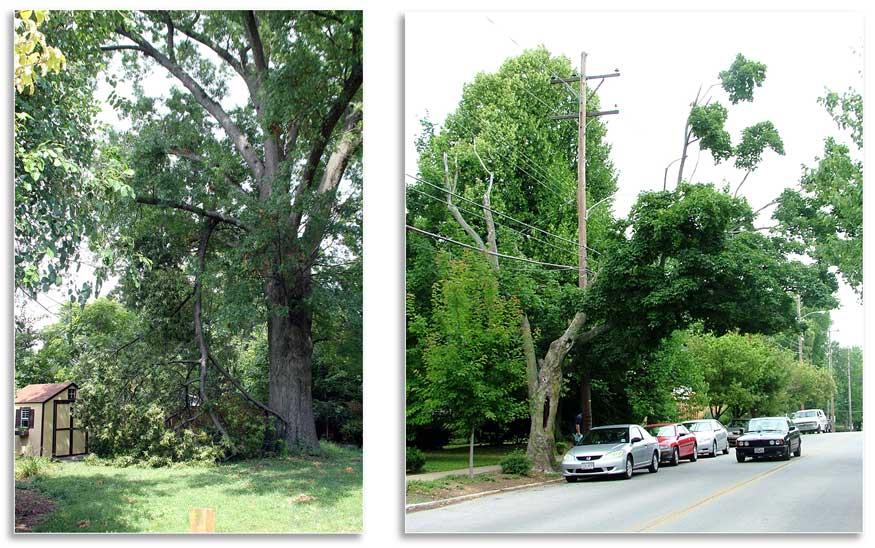Trees: Dendrophobia - The Fear of Trees
By William M. Fountain
Many people needlessly remove mature trees as a result of an irrational fear that the tree could fail and harm them, their loved ones, or their property. The decision to remove a mature tree should always be with the advice of an arborist. These green industry professionals who have the International Society of Arboriculture (ISA) Tree Risk Assessment Qualification have been trained in making tree risk assessments.
A tree risk assessment looks at a number of factors. The first of these is the Likelihood of Failure. This is based on professional judgement with consideration for existing defect(s), load on the defect, age and vigor of the tree, wood, species failure profile, anticipated environmental conditions, soil characteristics, and recent changes to the site.The likelihood of failure is coupled with the likelihood that the hazard will strike the target.

If a hazard falls and there is no target for it to strike, no harm has occurred. The Likelihood of the Hazard Striking the Target is assessed based on the anticipated direction of fall, type of target, occupancy rate, and protection factors. Some targets like houses are constant (always present). Others like a bench are moveable. With relatively little effort we can relocate moveable targets to an area where they are no longer at risk. Other targets are mobile. Mobile targets include people and automobiles that can be in the potential fall zone for varying amounts of time. For mobile targets arborists assess the frequency that a potential target will be in the fall zone. The likelihood of failure and impact is then compared with the Consequences of Failure.
The Consequences of Failure is evaluated independently of likelihood of failure or likelihood of a target being struck. The most important factor when considering the consequences is the value of the target. Human life is the most valuable and irreplaceable target arborists consider. The consequences will also be influenced by the size of the part and the fall distance. Consequences will also be influenced by protection factors. A house will offer protection to the people inside it (the house would be considered as a separate target from the people in it.)

These three factors are combined in matrices to give a Risk Rating of Extreme, High, Moderate, or Low. Mitigation efforts recommended by the arborist may lower the risk rating. This rating is compared against the client’s tolerance for risk. Many of our daily activities are associated with some level of risk. Driving/riding in an automobiles and using a stepladder to get something off a shelf in the kitchen are far more likely to kill us than a tree failure.
We should not be fearful of trees just because they are large. Mature trees are the single, most important factor in making cities liveable. Trees offer us environmental and social benefits that we cannot obtain by any other means. These benefits increase with the age of the tree and are more significant for genetically large trees like oaks than for small trees like dogwoods. Trees are biological organisms that accumulate defects as they age. Even with the most advanced equipment available it is sometimes impossible to detect all defects. The standard for inspections is what can be seen and detected from the ground. If your ISA Qualified Tree Risk Assessor© suspects that defects are present, he/she will suggest a more advanced inspection. Trees really do give us benefits we cannot live without.
Photography
-
Though a large branch failed, it missed all possible targets. This is the most common scenario for failures (W. Fountain)
-
This tree has numerous defects and potential targets.The care of trees in public areas is generally the responsibility of the landowner (W. Fountain)
-
Most trees failures occur during significant weather events, a time when people are generally under cover. Even when the weather is nice it is important to remain aware of your surroundings (W. Fountain)
-
Arborists with the ISA Tree Risk Assessment Qualification® are experienced and trained to assist tree owners (W. Fountain)
About the Author
Dr. William M. Fountain is an Extension Professor Emeritus of the University of Kentucky Department of Horticulture. Dr. Fountain is ISA Board Certified Master Arborist and is ISA Tree Risk Assessor Qualified. He is also a Register Consulting Arborist with the American Society of Consulting Arborists. Email at Bill.Fountain@uky.edu
